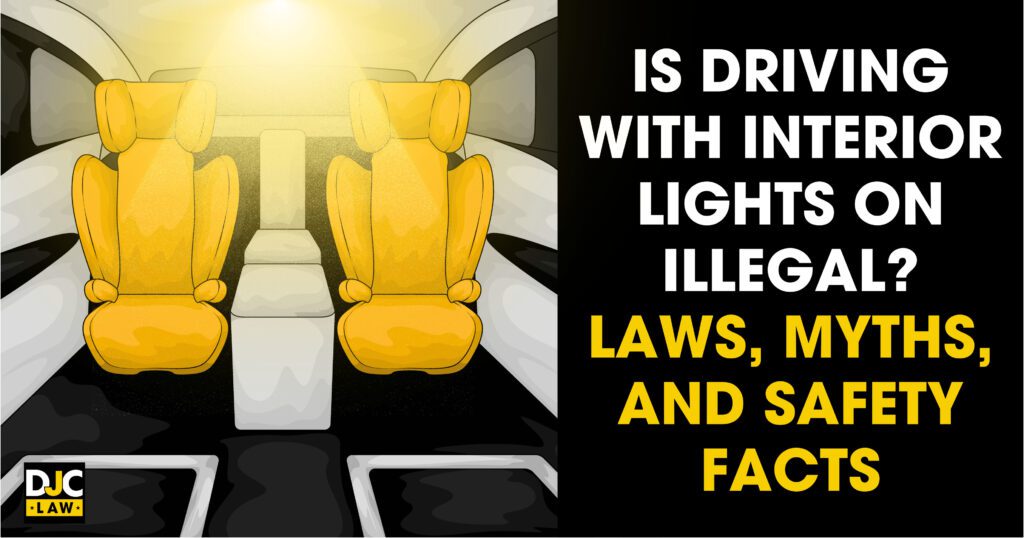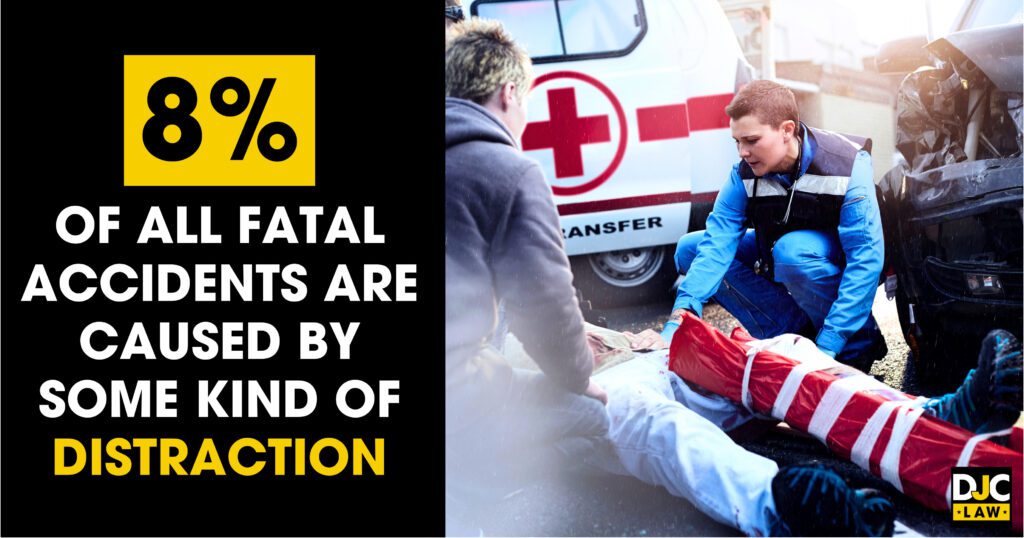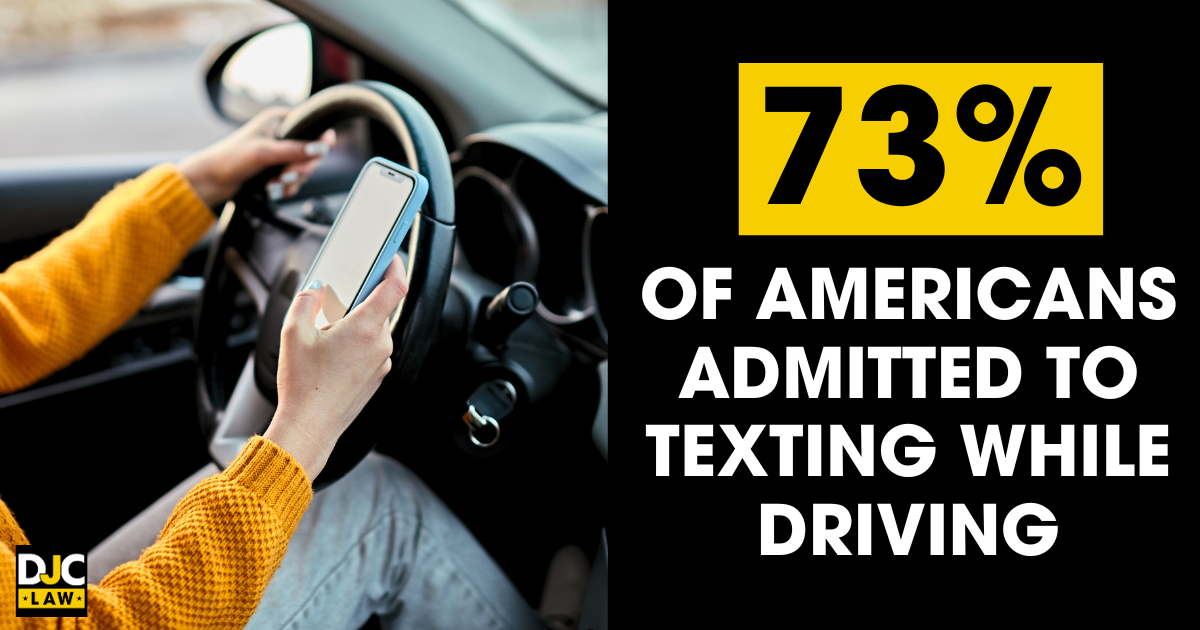
How often did your parents warn you about keeping your car’s interior light switched on when driving? Contrary to popular belief, it’s a myth that has passed from generation to generation with no basis in reality. No state in the country explicitly prohibits driving your vehicle with the dome light switched on.
However, that doesn’t necessarily make it a good idea. Interior lights are a distraction, and the National Highway Traffic Safety Administration (NHTSA) confirms that 8% of all fatal accidents are caused by some kind of distraction. In some cases, distractions can lead to serious crashes, requiring legal assistance. If you’ve been injured in a collision, an Austin car accident lawyer can help protect your rights and pursue compensation.
In today’s guide, we’ll discuss whether you can drive with interior lights in your state and how this practice connects with distracted driving laws.

Key Takeaways
-
Driving with interior lights switched on is not illegal in any state. Although the myth has uncertain origins, it could contribute to an accident through distracted driving.
-
Road safety experts consider driving with interior lights on dangerous because they can reduce visibility and act as a distraction.
-
Your interior lights should never be switched on while driving because they provide probable cause for driving while distracted, which could result in you incurring liability if you’re involved in an accident.
-
New York is a comparative negligence state, meaning you could still receive personal injury damages even if you’re partially at fault. Driving with your interior lights switched on could present a distraction, thus resulting in reduced compensation if you’re considered partially at fault.
-
Speak to an attorney if you’re involved in an accident with a distracted driver to ensure you receive the maximum available compensation.
Is It Illegal to Drive With Interior Lights On in Any US State?
No state has laws stating that driving with your vehicle’s interior lights on is illegal, whether that’s your dome light, dashboard light, or any other type of light. Likewise, enter any search term around the subject and you’ll find there’s nothing on the books at the federal level that prohibits this practice. In other words, an officer can’t issue a citation simply for having your interior light switched on.
But that doesn’t mean it’s a good idea. Taking your hands off the wheel to turn the light on or adjust it is a form of distracted driving because you’re not fully focused on the road ahead. And that could put your life at risk. According to the U.S. Centers for Disease Control (CDC), nine people are killed daily because of it.
However, if you’re involved in a car accident with your interior light on, it can be used against you. The light inside the car creates distraction potential for you and other drivers. So, although it’s not technically illegal, it could increase the odds of a motor vehicle accident.
In short, safety experts recommend keeping your interior lights off. If you must drive with them, dim them to their lowest possible setting.
Can I Get a Ticket for Driving With Interior Lights On in New York State?
Driving with your interior lights on isn’t illegal, meaning a traffic officer cannot issue you a ticket. If you were issued a ticket for driving with your interior lights on, you can appeal and get it overturned because you technically haven’t broken any laws.
The problem is that officers may still pull you over because they believe it could indicate something is wrong with the driver. For example, since it’s uncommon to see someone driving with an interior light turned on, they may believe you’re under the influence or using your cell phone.
In some cases, it can also swing a personal injury lawsuit against you as a contributing factor to a distracted driving crash. So, although you can’t get a ticket, it can still cost you anyway when claiming personal injury damages.
What Was the Origin of This Myth?
The myth that it’s illegal to drive with a car’s interior light turned on has no real origin story of note. It’s a fake idea passed from parent to child across the generations for as long as motor vehicles have existed.
The origins of this myth may come from the mistaken belief that a light in the vehicle could cause the driver, or another driver, to be blinded, thus leading to an accident. It’s also vital to mention that the construction of dome lights has changed, with lights in older vehicles being more distracting than newer ones.
Another reason for this myth is the misunderstanding of distracted driving laws. Most people only touch the lights when they’re doing something else, such as scrolling through the primary menu of their in-car entertainment center or reading directions off a map. The natural association between the light and not driving could have been firmly ingrained in many parents, resulting in the myth.
Of course, with MoneyGeek reporting that more than 3,000 Americans die annually from distracted driving, natural worries about road safety have led to parents passing on this myth without even thinking about whether it’s true.
But the truth is that it’s never been a law, and there are no plans in any state to pass specific laws against the practice anytime soon.
Is Driving With an Interior Light on in New York State Dangerous?
Driving with an interior light on is fine from a legal perspective, but it could increase your chances of being involved in a car accident. The number one reason is it presents a potential distraction for drivers and passengers.
Let’s explore some potential dangers of driving with interior lights on in the Empire State.
Distracted Driving
New York State requires drivers to adhere to traffic rules at all times and maintain both eyes on the road to prevent accidents. Should a dome light become a distraction that results in an accident, it could result in liability if you get into an accident.
It’s well-known that most drivers only switch these lights on when looking for something, so it could be used against you because it will be assumed that you’re doing just that.
Law Enforcement Problems
Police officers cannot pull you over and issue a citation anywhere in New York State because you’re driving with your dome light switched on. In practice, it’s going to make your vehicle stand out, and an officer may pull you over if they suspect distracted driving.
Although they can’t give you a ticket if they don’t find anything, the last thing you want is to be pulled over for a routine stop because your dome light is acting like a moth to a flame.
Visibility Issues
Just because the interior light is illegal theory is a myth doesn’t mean it has no impact on your driving. According to the University of Michigan, interior lights reduce forward sight distance by up to 20%. The effect is even more dramatic for rear sight distance.
It’s an even bigger problem if it’s raining. The light can reflect off the rain, making it difficult for you to see. Naturally, if you crash, there are going to be big questions to answer regarding whether your interior light played a role in your accident.
That’s the same principle as driving with your high beams on in heavy rain. Dipping your lights is essential for preventing blindness. Although your dome light won’t have such a dramatic effect, it could still increase your chances of hitting another vehicle.
The New York Department of Motor Vehicles restates the NY high beam law for a reason. It’s so strict that you can’t even use high beams if you’re within 500 feet of an oncoming driver or 200 feet of a driver in front of you.
What is Distracted Driving?
The definition of distracted driving is anything that takes your attention away from the road and the act of driving. Distracted driving is endemic in America, leading to countless crashes every year. A ScienceDirect study reported as many as 424,000 casualties in 2019.
Of course, distracted driving is a broad concept, with hundreds of actions that could fall under this definition. Generally, road safety experts split distracted driving into three categories:
-
Visual – Anything that takes your eyes off the road. This might include changing the radio station, checking the weather app on your cell phone, or turning on your dome light.
-
Manual – Anything that takes one or more of your hands from the wheel. That could be eating, drinking, or using your phone.
-
Cognitive – Anything that takes your mind away from the road. If you’re daydreaming, focusing on your favorite song, or chatting to a fellow passenger, these are evidence of cognitive distractions.
All types of distracted driving are illegal. The only state that doesn’t have any distracted driving laws at all is Montana. Despite this, interior dome lights alone often don’t fall under the distracted driving umbrella, but they might be a contributing factor under some circumstances.
For example, if you were speeding down a highway while one hand adjusted the brightness of your dome light, it could count as a visual, manual, or cognitive distraction, depending on how you were doing it.
You may be surprised to learn that distracted driving is incredibly common. One study by AutoInsurance.com revealed that as many as 73% of Americans admitted to texting while driving. And it’s worth mentioning that the official statistics we have on distracted driving are likely a severe undercount, with many drivers neither being caught nor admitting to it.

How to Avoid Distracted Driving from Interior Dome Lights
Avoiding distracted driving by turning your interior dome lights on is simple enough. In short, resist the urge to touch them at all unless you’ve come to a complete stop. Apply the same rules as you would to using your smartphone to check the top stories on your local news app. Pull over first before turning your lights on, and then switch them off before continuing your journey.
Turning on your interior dome lights could increase your risk of being involved in a car accident. Drivers may feel tempted to turn their lights on for any number of reasons, such as dropping their phones, retrieving something from the glove compartment, or clicking toggle menu on their in-car entertainment system.
The problem isn’t the interior dome light but what you’re doing when turning them on. After all, there’s no functional advantage to driving with them on. They don’t make you any safer or increase your driving performance.
Can Driving With Interior Lights On Lead to Liability in an Accident?
Driving with interior lights on may lead to liability in an accident. New York is a comparative negligence state following the “pure comparative negligence” model, meaning you can claim compensation even if you’re partially at fault.
The problem is that your interior lights could result in your final compensation award being reduced because the other side successfully argues that it contributed to your crash. For example, if it was raining, the other driver may argue the reflection of the light against the water partially blinded them.
Another issue is that you may find yourself being accused of violating distracted driving laws. After all, why would anyone turn their dome lights on if they weren’t doing something other than driving?
Even if you just wanted to have the light on for comfort, the image isn’t a happy one for your case. It’s another reason we always recommend keeping your interior lights off while driving.
The kicker is that driving with your interior lights alone won’t go down as a form of distracted driving, but it’s the message it communicates. It will be assumed that you were distracted since people generally don’t drive with these lights on.
How Could Interior Lighting Be Used as Evidence in a Personal Injury Claim?
Interior lighting may be used as a form of evidence in a personal injury claim to indicate that you were at fault. It’s primarily used to demonstrate that you were driving while distracted, but it may also be used in other ways to put the blame on you.
Here are some of the ways interior lighting might be used as evidence:
-
Distracted Driving – Having the dome light on may create glare or reflections inside the windshield. It may also show that you had your hands off the wheel or weren’t looking at the road at the time of the accident.
-
Reduced Night Vision – Bright interior lights can ruin your night vision, making it harder for your eyes to adjust when driving in the dark. This could result in you incurring liability if your night vision was impaired to such an extent that you didn’t see a hazard.
-
Potential Traffic Violation – Although driving with an interior light isn’t illegal, some jurisdictions might still classify it as an unsafe driving practice. Plus, you could be in trouble because traffic laws often state that all drivers must have good visibility and have an unobstructed view, which an interior light might compromise.
-
Impact on Eyewitness Statements – Another problem is that interior lights might undermine your own statement of what happened. For example, if you claim you didn’t see a pedestrian or other vehicle, it could be argued that if your interior lights had been off, you wouldn’t have had visibility problems.
-
Not Exercising Due Care – Driving with an interior light may demonstrate you weren’t exercising due care and attention behind the wheel. A lawyer may point to police reports and witness testimony mentioning a bright interior light. It may also be factored into accident reconstruction reports.
Factoring interior lighting into a car accident lawsuit complicates matters and makes it more difficult to argue the cases of accident victims. Despite not being illegal, it’s still a point of contention, with many road safety experts mentioning that it’s an unsafe driving practice. And that connection is what could limit your ability to claim your rightful compensation.
What Role Does Negligence Play in Car Accident Lawsuits?
Negligence is the central component of all car accident lawsuits – and personal injury claims generally. It determines who’s at fault and who’s liable to pay damages. In a nutshell, if you’re injured because someone hit you, negligence shows that your losses were caused by their actions or inactions, thus opening the way for you to claim damages.
But what is the definition of negligence?
Negligence is a failure to act with the appropriate level of care that a reasonable person would display if they were in a similar situation. Proving negligence is your personal injury lawyer’s primary goal in any case, which incorporates four elements:
-
Duty of Care – Did the at-fault driver owe you a duty of care?
-
Breach – Did the at-fault driver breach that duty of care? Breaches may include but are not limited to speeding, texting while driving, and driving while intoxicated.
-
Causation – The at-fault driver’s actions or inactions caused the accident that resulted in your injuries and/or losses.
-
Damages – Finally, you must demonstrate that you suffered actual damages because of the accident. These damages may be as straightforward as medical bills or time off work, but they could also extend to long-term medical care and emotional distress.
The only way to receive monetary damages in any state is for your car accident lawyer to prove these four elements. If any of them are missing, you can’t prove negligence, and you can’t prove that you’re entitled to compensation for your losses.
Could Interior Light Distractions Affect a Driver’s Legal Responsibility?
Drivers always have a duty of care to themselves and others around them. All states require drivers to maintain full control and focus on the road. Since interior lighting could result in distractions, the ability to fulfill their duty of care is compromised.
The issue is glare and reduced visibility, especially if driving in darkness or in poor conditions. Unfortunately, this is a particular problem in New York as a comparative negligence state. In jurisdictions like the Empire State, your liability may be increased, thus having a direct impact on how much you can claim.
For example, say that you were hit by a driver who was under the influence and speeding. Ordinarily, you’d think this would be an open-and-shut case, but the presence of an interior light – it could be argued – also contributed to the accident.
Even if the other driver is still ultimately to blame, your compensation could be reduced by however much of an impact the interior light is seen to have on the accident.
Another way this could work is if you crash into a pedestrian crossing the road. You argue that the passenger wasn’t using a designated crosswalk, there was poor visibility, and the pedestrian darted out without looking.
However, the pedestrian’s legal team might argue that your brightly lit interior caused a distraction, thus contributing to the accident. Since you didn’t do everything possible to mitigate distractions, you could be apportioned some of the blame.
What if Someone Else Turned On the Interior Light in a Car Accident?
Your passenger may turn on the interior light to look for something. Likewise, your kids may decide to play with the light without your permission. The fact is that this isn’t a real legal argument because the driver assumes all responsibility for what happens in their vehicle.
It’s why motorists can still be ticketed if their passengers aren’t wearing seatbelts. It’s not a valid argument to state that you weren’t the one who turned on the interior light.
When Can a Driver Be Held Liable for Distracted Driving?
Distracted driving is a traffic violation in every state except Montana. All drivers can be held liable for distracted driving if it’s shown that their actions were negligent and they caused an accident. Even if you didn’t cause any damage, distracted driving could still result in a traffic citation.
Firstly, it must be proven that the driver was distracted. Examples of distracted driving might include:
-
Texting when driving.
-
Taking calls while driving.
-
Turning around to deal with unruly passengers.
-
Eating or drinking while driving.
-
Taking your hands off the wheel to change the radio station.
It also extends to anything that takes your eyes, hands, and mind away from the road. In that sense, fiddling with the interior light could be classified as a type of distracted driving if that’s what you were doing at the time of your accident.
In terms of liability, you can be held financially responsible for any and all damages, including economic and non-economic, if it’s believed a distraction resulted in an accident.
It’s also worth mentioning that you could be pulled over even if you didn’t cause an accident. If a traffic officer sees you with one hand messing with the light while you’re driving, they could pull you over and issue a distracted driving ticket because you weren’t concentrating on the road.
How Do Insurance Companies View Interior Light Distractions?
Insurance companies take the same position as the law. They can’t unfairly penalize you because you had your interior lights on if it’s not against the law. However, they can raise your insurance premiums if your interior lights contributed to a distracted driving accident.
The consequences of interior light distractions from an insurance perspective include:
-
Increased Premiums – It’s a given that your insurer will raise your premiums after an accident to account for what they had to pay out to cover the other driver’s damages.
-
Refusal of Future Coverage – Drivers with a history of accidents and citations can see their future coverage voided if they’re considered an outstanding risk.
-
Insurance Search – If you’ve got a distracted driving mark on your record, it might make it harder to secure coverage in the future. Some insurers may refuse to provide coverage at all or only provide limited coverage.
Insurers treat interior light distractions in the same way as any distraction behind the wheel. During their investigations, adjusters will leave no stone unturned to determine whether your interior lights contributed to your accident.
What are the Legal Consequences of Distracted Driving Accidents?
Distracted driving accidents open you up to legal consequences if it’s proven that you were distracted behind the wheel. These consequences include fines, points on your license, and even criminal charges.
Let’s go through the potential penalties for driving while distracted in New York:
-
Fines – You may be fined anywhere from $50 to $450, depending on how many previous offenses you’ve got on your record.
-
Points – The Empire State uses a points system for driving licenses. Distracted driving can incur a maximum of five points on your license.
-
Suspension – Your license may be suspended if the number of points surpasses the tolerated maximum of 11 points in 18 months. In severe cases, your license could be revoked entirely.
-
Liability – The other driver could file a personal injury lawsuit against you. This means you’re financially responsible for damages, which your auto insurer will pay.
-
Criminal Charges – Accidents that lead to serious injury or death could incur criminal charges. If the state decides to charge you criminally, a momentary distraction could result in mandatory incarceration.
As you can see, actions that might not seem like a big deal could upend your life, resulting in consequences that last for years to come.
Can a Distracted Driving Ticket Affect My Car Insurance?
Getting a distracted driving ticket, even for a minor accident, can see your insurance premiums rise. All auto insurers judge policyholders based on perceived risk. Drivers with tickets on their records are considered to be at a higher risk of being involved in an accident, so insurers raise their premiums to cover this risk.
If you have too many tickets, your insurer may refuse to renew your existing policy, thus leaving you to scramble and find coverage elsewhere.
What Should You Do if You Are Injured in a Distracted Driving Accident?
Were you hit by a distracted driver? What you do next will impact your claim and whether you’re entitled to full compensation.
Follow these steps in the immediate aftermath of your accident:
-
Check yourself and your passengers for injuries. Call an ambulance if anybody is seriously hurt.
-
Call 911 and ask for a traffic officer to attend.
-
Exchange insurance information with the other driver, as you’re required to by law.
-
Use your cell phone to gather evidence, including vehicle damage, road signs, and any visible injuries.
-
Ask any eyewitnesses if they’d be willing to provide a statement and take down their contact details.
-
Wait at the scene until a police officer attends and fills out an accident report.
-
Visit your nearest medical facility for a checkup to ensure that you don’t have hidden injuries. Whiplash, concussion, and other injuries may take a few hours or days to surface.
How Can Legal Representation Help in a Personal Injury Claim?
Legal representation is critical for filing your personal injury claim. Although you can file and pursue your own claim, this is rarely a good idea. As Nolo found, the average personal injury compensation package is three to four times higher when the injured party hires a lawyer.
Some of the functions of a personal injury attorney include:
-
Dealing with your insurance company.
-
Gathering evidence.
-
Connecting you to the best medical providers.
-
Filing complicated legal paperwork.
-
Negotiating your case to get you the highest possible settlement.
-
Supporting you if your case goes to trial.
Most car accident attorneys operate on a contingency basis, meaning they only get paid if you win your case. In other words, it’s a risk-free play.
What Evidence is Important for Proving Liability in These Cases?
Proving that the other driver was negligent and responsible for your injuries requires gathering as much evidence as possible. Your attorney will use all available evidence to fight your corner and demonstrate that the other driver was liable for your injuries.
Examples of evidence that may be used include:
-
Official police accident reports.
-
Expert witness testimony.
-
Eyewitness statements
-
Dashcam footage.
-
Surveillance footage.
-
Photographs from the scene.
-
Medical reports.
-
Accident reconstructions
Driving With Interior Car Lights FAQs
Do car interior lights affect driving?
Car interior lights affect driving by being a potential distraction behind the wheel, even if a passenger is using them. Evidence shows they reduce your ability to see in front and behind, especially during rainy conditions.
Should you switch off car interior lights while driving?
Your interior lights, including dome and dashboard lights, should be switched off while your car is in motion. If you need to use your interior lights while driving, pull off to the side of the road and use them then. They should be switched off when you begin driving again.
Can you get pulled over for driving with interior lights?
Yes, you can. Although driving with interior lights isn’t illegal, a traffic officer can still pull you over if they reasonably suspect you’re driving while distracted.



